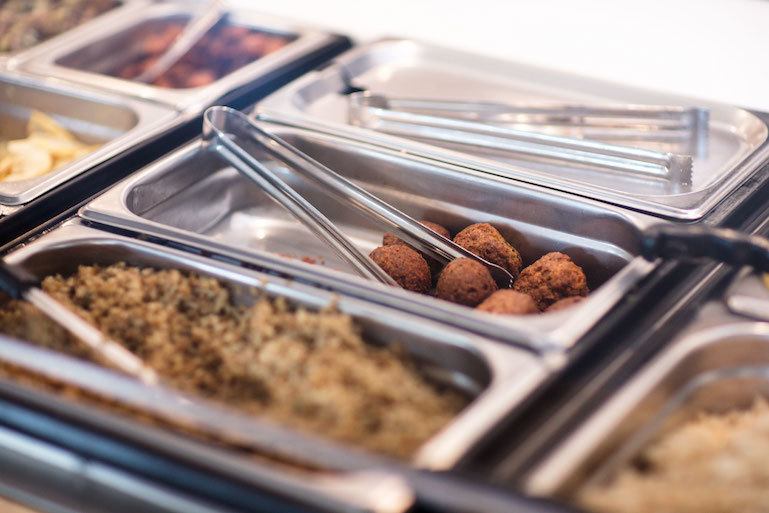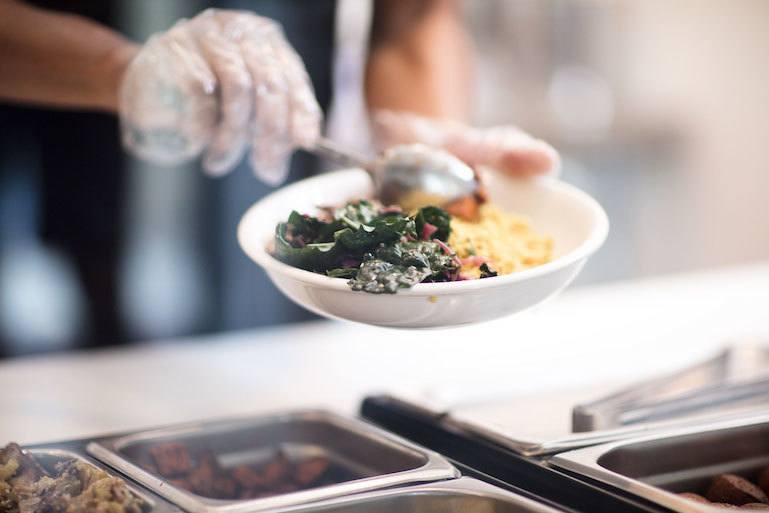
How to Control Food and Beverage Stock Effectively
Efficient stock control is an essential component of any business, but especially for food and beverage businesses.
One small stock management error can lead to food shortages, unnecessary food waste, and inaccurate forecasting. All of which impacts food and beverage cost control for your food and beverage business. If you’re tracking inventory manually, you’re wasting time on food and beverage operations that could be spent on other aspects of the business.
POS systems are a vital part of modern stock control and are beneficial to all food and beverage businesses, regardless of size. When stocktaking processes are automated, you’re able to invest valuable time and resources in other areas of the business. In the end, this can help support your efforts towards your ultimate business goal: more sales and better profit margins.
What is a Food and Beverage Stock Control System?
A food and beverage inventory control system automates the process of monitoring the flow of food and ingredients in your food and beverage business. These systems provide business owners with insights that empower them to spot potential cash flow issues and improve stock control.
When Should You Count Your Stock Items?
The most critical aspect of managing stock items in a food and beverage business is consistency. Running a food and beverage business involves handling a variety of perishable goods. Because of this, you’ll want to take stock daily to ensure that you’re minimizing food waste and aren’t selling expired items.
One essential stocktaking rule is ensuring you do it at the same time every day. It’s best practice to take inventory after your doors close or before you open. Whatever you decide, make sure you’re consistent to avoid fluctuations in reporting. While this is not always possible, adhering to it as strictly as possible can help you get the most accurate numbers related to your stock levels.
You should also avoid taking inventory while deliveries are being made since this can lead to double-counting items. If possible, make sure the staff members you assign to manage your stock are consistent as well. This will not only speed up the process but it makes it easier to spot anomalies and reduce errors.
SEE ALSO: Basic Inventory Management Techniques for Better Business
The Benefits of Stock Control
Using a stock control system helps enhance business practices within quick-service restaurants, catering companies, and any other type of food and beverage business. As mentioned previously, an inventory tracking system helps food and beverage businesses effectively manage waste, increase productivity, and control cash flow.
It’s common practice in many industries to keep a close eye on manufacturing costs as well as the overall market value of products. Yet some food and beverage businesses don’t subject their menu to the same level of scrutiny. Maintaining an efficient stock control system can help you offset overhead costs, adjust menu pricing, and devise a plan for portion control.
When your business implements a proper control system, you’ll find that you’re in a better position to make business decisions. For example, you may discover that certain menu items have lower profit margins than expected. In this example, when items go unsold, you burn even more money, negatively impacting cash flow. Armed with this information, you can make changes that recover lost profits and guard against similar pitfalls in the future.

Controlling Costs
Inventory control is a vital aspect of restaurant management. Adopting a POS system like ShopKeep, revolutionizes your inventory management process via its user-friendly interface and simple-to-use software.
There are many factors to consider when it comes to setting prices. Using a POS system helps regulate inventory and ensure your prices are competitive. Setting up this initial purchasing process is the first major step to efficient restaurant inventory management.
Keeping menu prices in line with the price you pay for raw goods can be a challenge since the food market fluctuates. A POS system helps ensure that your menu pricing strategy factors in the cost of production and overhead.
SEE ALSO: How to Calculate Food and Beverage Cost: Know Your Dough
Achieving Acceptable Profit Margins
There’s no simple formula to establish what your profit margin will be for a given time. It all depends on how many customers you serve, how much they spend, and what they spend it on. However, using a POS system like ShopKeep will give you the cost and sales data you need to understand your margins and take steps to improve them.
When inventory management is automated, it saves you valuable time that could be spent on other operational aspects of the business. Plus, your POS system can help you stay on top of strategic opportunities that you might otherwise miss or forget.
For example, if you have stock items approaching their use by date, your POS system can alert you. Rather than allowing items to go to waste, you can use this information to offer a limited-time discount before the items perish. While selling goods for a reduced price isn’t ideal, it certainly beats having to throw food away and take a financial loss. Minimizing the amount of food you have to throw out is key to maintaining desired profit margins, and with the help of a POS system like ShopKeep, this is easily achievable.
Inaccuracies in financial reporting can also lead to poor business decisions. The best solution for this problem is to invest in an inventory management system that integrates with an accounting solution. Rather than relying on multiple software provides and sources of truth, find a point of sale system that automates inventory management and sends data to your accounting software automatically.
Identify Problem Areas in the Business
From identifying a pricing strategy that doesn’t work to reducing the amount of time it takes to input data manually, a POS system will provide your business with the boost of productivity that it needs. With an automated system in place, identifying problem areas takes considerably less time, and you reduce the chances of human error.
Preventing Food Waste
Adopting a stock and beverage control system can help you maintain your profit margins. Along with labor costs, replenishing your inventory is the most significant expense your business faces. By implementing a stock control system, you can reduce how much food your business wastes. Food waste is a massive problem throughout the United States with an estimated 30-40 percent of the supply ending up in the trash. With the right technology, businesses both big and small can help minimize their contribution to waste.
The ideal first step is to work out how much food you’re wasting unnecessarily. There are situations where food waste is unavoidable, for example, if the customer doesn’t like the dish and sends it back to the kitchen. However, things such as cooking errors, preparation waste, and spillages are avoidable. With the right training and equipment, staff can become more mindful of food waste and how to minimize it.
If you’re concerned about how much food is going to waste, conduct an audit to determine where that waste is coming from. For the best results, do this when your restaurant is busy, but your kitchen is not operating at maximum output. While you want the audit to produce effective results, you don’t want to degrade the quality of your service by causing unnecessary delays.
Your POS: The Foundation of Stock Control
As mentioned throughout this post, managing stock manually is inefficient and could be damaging profit margins as a result. Adopting inventory management software for your restaurant’s stock control processes can reduce your workload massively. In principle, stock control systems are similar to manual ones but involve a lot less work for you and your restaurant staff. Not only is it easier to input information, but it’s also easier to retrieve and analyze data. With modern POS technology, you can perform crucial tasks such as checking your inventory’s value in a matter of seconds.
Your POS system is the central hub for gathering the information required to develop an efficient stock control and inventory management process. Regardless of size, every restaurant can benefit from the support of a POS system. The sheer amount of work that stems from accurate stock taking can be reduced to just a few minutes of time spent on your iPad or laptop.
Making a stock control plan without a modern POS system is a massive undertaking. You need to analyze various sources of data, such as invoices from your suppliers and receipts from your cash register, and then input them manually into a spreadsheet. This outdated method takes an incredible amount of time and may not even provide you with accurate data to create meaningful change. Even going through the painstaking process once a year would cost you precious time and money. On the other hand, invest in a POS system, and the hard work is taken care of for you.
If you’re struggling with food management and beverage stock control, it’s time to modernize your business operations.
Want to try ShopKeep for yourself?
Just answer a few easy questions.
Need help finding the right point of sale?
Just complete the form. We’ll call you right back to explain how ShopKeep can work for you.
Hit the ground running.Sprinting, in fact!
Read our free, comprehensive guide, Small Business 101, to learn all you need to know about starting a thriving business.

